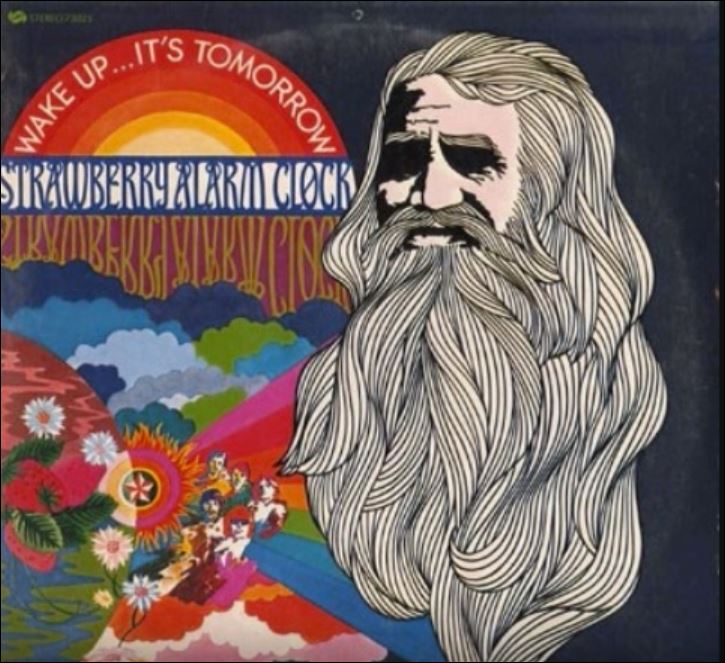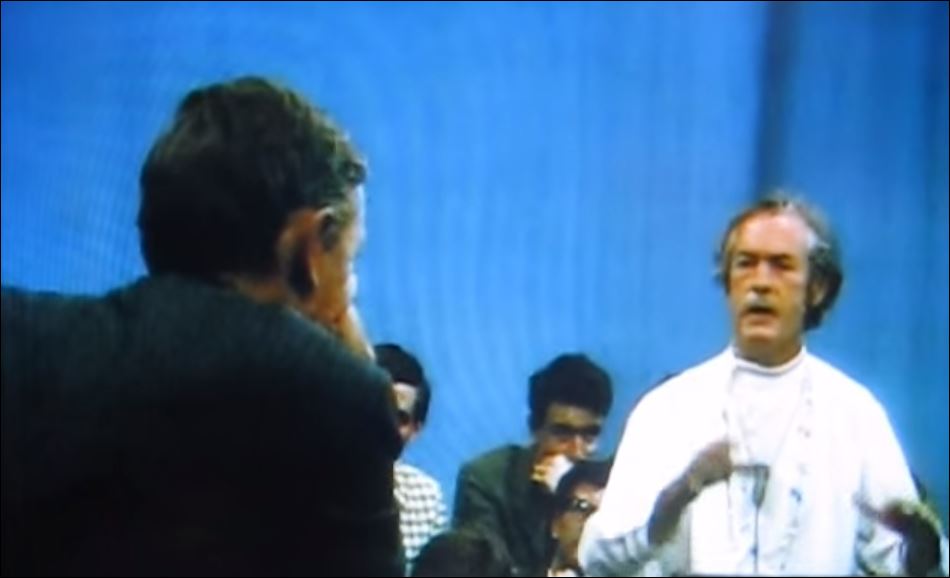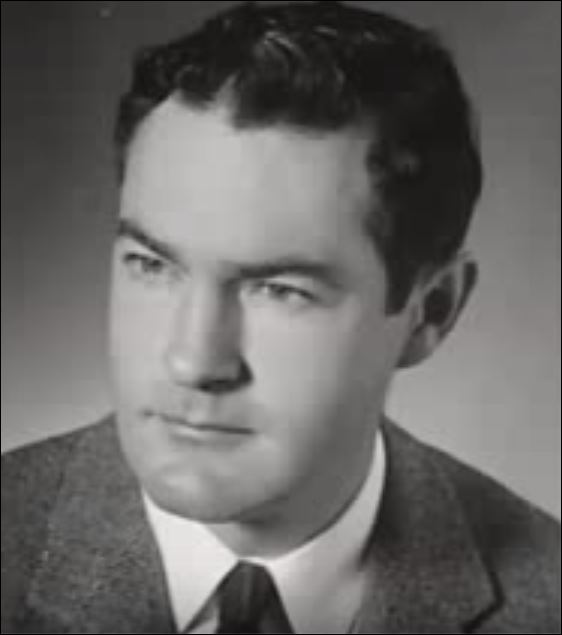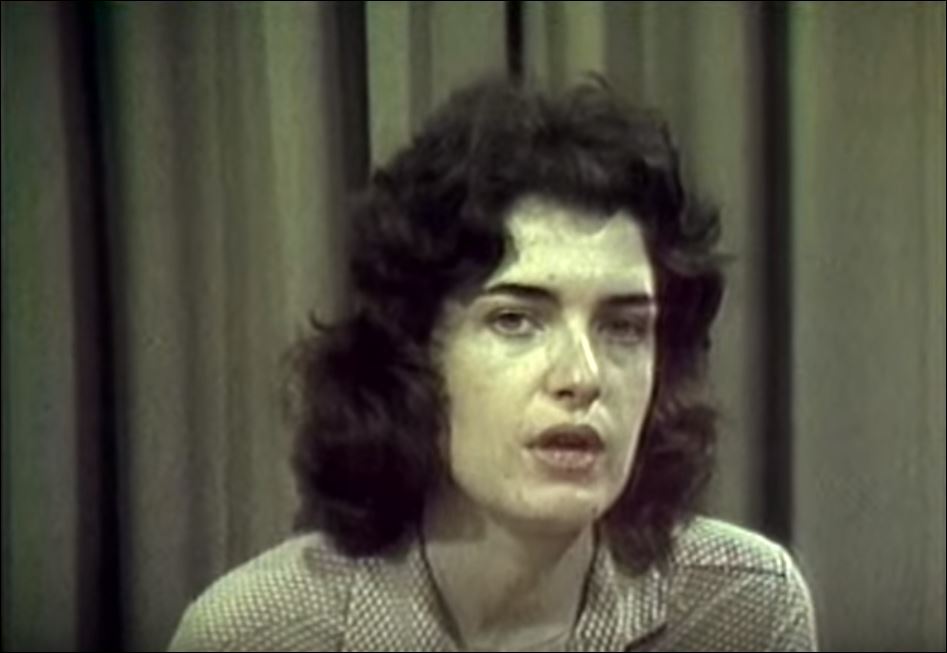Remembering the revolutionary 'Summer of Love'
The Revolutionary Summer of Love
Summer of Love historian William Schnabel: A revolution, a happening, a turning point--he was the
Remembering the revolutionary, hedonistic and sexist 'Summer of Love'*
By Patt Morrison PATT MORRISON ASKS
Some fraction of the country — the young, the curious, the rebellious, the rootless — went to San Francisco 50 years ago; much more of the country watched it and read about it. The 1967 “Summer of Love” is a freeze frame, a template, sometimes even a self-parody of flower power, of love and LSD, of mind-blowing music and countercultural thinking. Its backdrop was the Vietnam War, the generation gap and the 1967 urban riots. Its future, diluted somewhere amid political assassinations and law and order and Kent State and more, was Vietnam.
William Schnabel was a 17-year-old high school student during the Summer of Love; he hung out in the Haight when he could, going to the seminal Human Be-In, the happenings, the ground-breaking and earth-shaking ballroom rock concerts. Fifty years on, he’s written about the time and the place in the book “Summer of Love and Haight: 50th Anniversary of the Summer of Love.” He’s a historian now retired from a French university, and remembers and analyzes that seminal season.
For a teenager like you to go down and spend your weekends there, it sounds a bit like a carnival — people riding bicycles and blowing bubbles and clanging finger cymbals. What did it look like walking down the streets there?
Well, it was, to use the idiom of the period, a mind-blowing experience! It was revolutionary! A cultural revolution was going on. An artistic revolution was going on. A political revolution was going on in many ways, too. It was revolutionary! It was like a carnival, too. Sometimes there were parades organized by the Diggers; a lot of them came from a theatrical background. Some of them had worked with the San Francisco mime troupe and a lot of them left the San Francisco mime troupe because they wanted to do it in the streets, not on a stage.
There were a lot of students; there were artists. It was called the new Bohemia. Young people were going there because you could rent a room at a very reasonable price. Young people were getting together and living communally in the Victorians. So they had similar ideas.
They were certainly more liberal-minded than most. A lot were smoking grass — that created a kind of general movement that just sprouted and grew, I think.
The idea of communal living was that everybody put into the pot and everybody took out. How did that work in practice when it came to the food and sleeping and drugs?
It didn’t always work out so well, unfortunately. It’s one thing to have certain goals and ambitions and ideologies, but to put them into practice is not always successful. Some people might not pay their fair share. Some people might be more selfish than others. But it’s very difficult to generalize about communal living. The rock band the Grateful Dead lived together at 710 Ashbury. That worked for them pretty well. It depended on the communal stew; it depended a lot on the ingredients you put into it.
Did you spend a lot of time hanging out in those places, besides the ballrooms and the music venues?
Me and my friends, if we needed something, if we were looking for a "lid," is what we called an ounce of marijuana at the time, it was easy. You just walked down Haight Street and usually you’d walk by someone who’d be advertising their wares. I might crash there on the weekend with friends in a crash pad. Some of them were Digger crash pads.
What were the Diggers?
The word “Digger” comes from the 17th century. English Diggers believed every Englishman should own a plot of land that he could farm, and that the government should be run by the people.
San Francisco’s Diggers, generally speaking, were opposed to authority. Everyone was equal, right? The San Francisco Diggers felt that everything should be free. Food should be free. In fact, they set up free food in the Panhandle of Golden Gate Park. They did that for a while every day at 4 p.m. They had a Digger store; everything in the store was free. Sometimes people would go to the Digger store and say, well who’s in charge here? And if there was a Digger around, he’d say, well, you are.
Where did all that good stuff come from? If you’re giving away food, you have to get it from somewhere.
Some of it was excess food, some might be produce that was not really fresh or that had been thrown out. Some of it was donated. They’d go to bakeries — "Do you have any stale bread?" "Yeah we’ve got some over there." So they’d take that. Some of it was just ripped off. Emmett Grogan was arrested a couple of times because when he saw an open door of a meat truck, he’d just help himself.
So many of the kids who were there seemed to be white and middle-class for the most part, educated for the most part. What was the class nature of what was going on then?
You’re right. The hippies, by and large, were white; there were not that many Afro-Americans or Hispanic-Americans or Asian-Americans. Basically they were white, middle class. They rejected materialism. They came from nuclear families, and they rejected the American Dream.
The neighborhood that is right next to the Haight-Ashbury is the Fillmore district. I don’t know if it’s changed today, but in the ’50s and ’60s it was predominantly black. The Afro-Americans wanted a part of the American Dream. They wanted all these so-called meaningless goods that the hippie culture was rejecting. That’s why Jimi Hendrix is something of an anomaly in psychedelic rock. Because he was a black American. And there was a guy who sold acid. His name was Super Spade, “spade” meaning black. But by and large the people in the Haight-Ashbury were white, middle-class or working-class.
What about women there? What were women doing during this period in the Haight Ashbury?
In many ways women did seem to have a subservient role in the counterculture. Women in the Diggers tended to have a subservient role. By that I mean they didn’t make the major decisions. Things had to be decided, right? Where are we going to go, what are we going to do? And the men in the Diggers tended to decide that. In a lot of the communes, that seemed to be what was happening as well. The women took care of the children, they did the housework, they did the cooking — the traditional kind of family situation.
And this is while the guys were out there preaching equality?
I don’t know if they were all preaching equality. They were preaching for rights. It’s somewhat contradictory; some people have said that out of the hippie movement feminism grew as well. But I’m not so sure about that.
Law enforcement and much of the political establishment regarded these kids and their ideas with suspicion.
You’ve got two diametrically opposed mindsets. You have a really conservative mindset, the older generation who fought World War II. And then you had the younger generation that was smoking marijuana. Our parents did not smoke marijuana, you know. They drank bourbon, they drank whiskey, they drank Thunderbird wine, they drank beer,
They saw their children letting their hair grow. So you have these two contradictory cultures clashing. One is opposed to the Vietnam War; our parents were for the Vietnam War. You do what the government says, right? You don’t contradict the government.
So whatever the reason that drew so many people to this moment in San Francisco, whether it was the war and the draft or drugs or spirituality, it was about challenging authority. That was the common thread?
Not necessarily challenging, but rejecting authority. Trying to decipher it for yourself. “Do your own thing,” which was one of the slogans of the time. That implies thinking for yourself. Don’t be a robot, don’t accept what everybody tells you, because it might not be true. The psychedelic counterculture felt that the American Dream and imperialism and the arms race and the Cold War were chaos. That would lead to destruction. And that, I think, explains why a lot of young people rejected the ideas of their parents.
In all the time you got to spend there, did you sense that Vietnam was a cloud that was just off the horizon, if it wasn’t actually hanging above everyone’s head?
Sure. For young people that was the fear. Timothy Leary talked about dropping out. And dropping out could have its risks, too. If you were in school or in college, you had to maintain a certain grade point average. Otherwise, Uncle Sam would send you his letter of "greetings" notifying you to appear at your local draft board in the very near future. Young males who were drafted were sent to Vietnam where they could be killed for no good reason.
What were the elements of the disintegration of that singular moment in San Francisco?
Something destroyed the Haight. As a history teacher, I’m interested in that because I don’t think things just happen for no reason. There are causes and there are consequences. What killed the Haight-Ashbury?
Well, the media killed the Height-Ashbury by simply making it become a cliché. If you repeat something often enough, it tends to become automatic and people tend to forget what the deeper meaning is.
Too many people overwhelmed a small district of San Francisco. That killed the Haight-Ashbury.
Before the Summer of Love, there was the Human Be-In [in January 1967 in Golden Gate Park], which I think was the high-water mark for the Summer of Love. In ‘66 and up to the Be-In, people’s attitudes were different. People believed in sharing. You could see people tried to be sincere. People were, I think, more honest. After the Be-In, there tended to be kind of a decline. People started getting more selfish. There were people who were drawn to the Haight-Ashbury because of all the publicity, and because they wanted to take something out rather than give something.
There were a lot of the people in the establishment who didn’t like the hippies. [Governor Ronald] Reagan had a joke about the hippies that you probably heard at one time or another: that a hippie dresses like Tarzan, he walks like Jane and he smells like Cheetah.
And then there was LSD. Owsley Stanley was the clandestine chemist who manufactured LSD. His LSD was pure; he wasn’t mixing it up with garbage. You knew what you were getting. Then all of a sudden he was arrested in December of 1967. After that you got these weird drugs. The quality of LSD got very bad after that. Then there were a lot of weird drugs. A lot of hard drugs were dumped into the Haight-Ashbury.
What do you think the lasting influence has been, all these years later?
I think there are a lot. Look at the United States today. Look at marijuana. Look at the number of states that have de-penalized marijuana. A lot of states authorize marijuana for medical purposes. How things have changed!
And in many other areas as well. Ecology, for example. Today, people know that you cannot pollute the planet indefinitely. And look at music. Many songs from the 1960s are still played today.
Today, people have a healthy questioning of authority. I think a lot of that came from the counterculture. The importance of the human body, too. People are not afraid to show their bodies today. Look at the integration of homosexuals, minorities, perhaps to some extent the feminist movement, as well. All of that stemmed from the ideas of the counterculture.
And pacifism, too. People who were opposed to war. And look at how the sexual mores have changed. All of those things have changed because they started in the 1960s with the counterculture
Today, the Summer of Love is a buzzword, and everyone knows, or thinks they know what it is, but in fact it was an extremely complex period in American history.
There seems to be no question it was a turning point in American history.
It was a turning point, because look what happened afterwards. In ’68, you had the assassination of Martin Luther King, Robert Kennedy, the escalation of the Vietnam War, the killing of civilians at My Lai. Three years after the Summer of Love, the [violent radical group] Weather Underground declared war against the United States of America.
After the Summer of Love, there was a radicalization. After the summer of 1967, San Francisco was being emptied of its counterculture. Everyone who could get out was leaving. The young people were leaving the Haight-Ashbury because of the police brutality, because of the bad drugs, the hard drugs. There was a lot more violence — peace and love were gone.
Is there one piece of music for you that brings it all back, that takes you right back there?
One album in particular: Jefferson Airplane and Surrealistic Pillow, that I think in many ways captures the essence of the period.
* I did not much care for the title chosen by the editorial staff of the Los Angeles Times because it is too negative. Mainstream America was a lot more sexist than the psychedelic counterculture, and young people in the counterculture were not just devoted to pleasure, far from it. That idea was propagated by the mainstream media and quickly became a cliché, but the reality was a lot different. It could be argued that straight culture was even more hedonistic than the counterculture, though the pleasures it sought were of a different kind. William Schnabel
Curse Of The Witches
Strawberry Alarm Clock's "Curse Of The Witches", from their 1968 album "Wake Up...It's Tomorrow". One of their longest songs.
Leary vs Buckley
Timothy Leary VS William Buckley on LSD
Dr. Timothy Leary, "High Priest" of the psychedelic movement, would like to turn on & drop out neoreactionary guru, William F. Buckley.
MK-ULTRA Mind Control Research Program
MK-ULTRA Mind Control Research Program
MKULTRA Compendium: http://www.amazon.com/gp/product/1441...
[From YouTube] In 1950, the CIA initiated Project Bluebird, later renamed Project Artichoke, whose stated purpose was to develop "the means to control individuals through special interrogation techniques", "way[s] to prevent the extraction of information from CIA agents", and "offensive uses of unconventional techniques, such as hypnosis and drugs". The purpose of the project was outlined in a memo dated January 1952 that stated, "Can we get control of an individual to the point where he will do our bidding against his will and even against fundamental laws of nature, such as self preservation?" The project studied the use of hypnosis, forced morphine addiction and subsequent forced withdrawal, and the use of other chemicals, among other methods, to produce amnesia and other vulnerable states in subjects. In order to "perfect techniques for the abstraction of information from individuals, whether willing or not", Project Bluebird researchers experimented with a wide variety of psychoactive substances, including LSD, heroin, marijuana, cocaine, PCP, mescaline, and ether. Project Bluebird researchers dosed over 7,000 U.S. military personnel with LSD, without their knowledge or consent, at the Edgewood Arsenal in Maryland. More than 1,000 of these soldiers suffered from several psychiatric illnesses, including depression and epilepsy, as a result of the tests. Many of them tried to commit suicide.
In 1953, the CIA placed several of its interrogation and mind-control programs under the direction of a single program, known by the code name MKULTRA, after CIA director Allen Dulles complained about not having enough "human guinea pigs to try these extraordinary techniques". The MKULTRA project was under the direct command of Dr. Sidney Gottlieb of the Technical Services Division. The project received over $25 million, and involved hundreds of experiments on human subjects at eighty different institutions.
In a memo describing the purpose of one MKULTRA program subprogram, Richard Helms said: We intend to investigate the development of a chemical material which causes a reversible, nontoxic aberrant mental state, the specific nature of which can be reasonably well predicted for each individual. This material could potentially aid in discrediting individuals, eliciting information, and implanting suggestions and other forms of mental control. —Richard Helms, internal CIA memo
In 1954, the CIA's Project QKHILLTOP was created to study Chinese brainwashing techniques, and to develop effective methods of interrogation. Most of the early studies are believed to have been performed by the Cornell University Medical School's human ecology study programs, under the direction of Dr. Harold Wolff. Wolff requested that the CIA provide him any information they could find regarding "threats, coercion, imprisonment, deprivation, humiliation, torture, 'brainwashing', 'black psychiatry', and hypnosis, or any combination of these, with or without chemical agents". According to Wolff, the research team would then: ...assemble, collate, analyze and assimilate this information and will then undertake experimental investigations designed to develop new techniques of offensive/defensive intelligence use ... Potentially useful secret drugs (and various brain damaging procedures) will be similarly tested in order to ascertain the fundamental effect upon human brain function and upon the subject's mood ... Where any of the studies involve potential harm of the subject, we expect the Agency to make available suitable subjects and a proper place for the performance of the necessary experiments. —Dr. Harold Wolff, Cornell University Medical School
Another of the MKULTRA subprojects, Operation Midnight Climax, consisted of a web of CIA-run safehouses in San Francisco, Marin, and New York which were established in order to study the effects of LSD on unconsenting individuals. Prostitutes on the CIA payroll were instructed to lure clients back to the safehouses, where they were surreptitiously plied with a wide range of substances, including LSD, and monitored behind one-way glass. Several significant operational techniques were developed in this theater, including extensive research into sexual blackmail, surveillance technology, and the possible use of mind-altering drugs in field operations.




